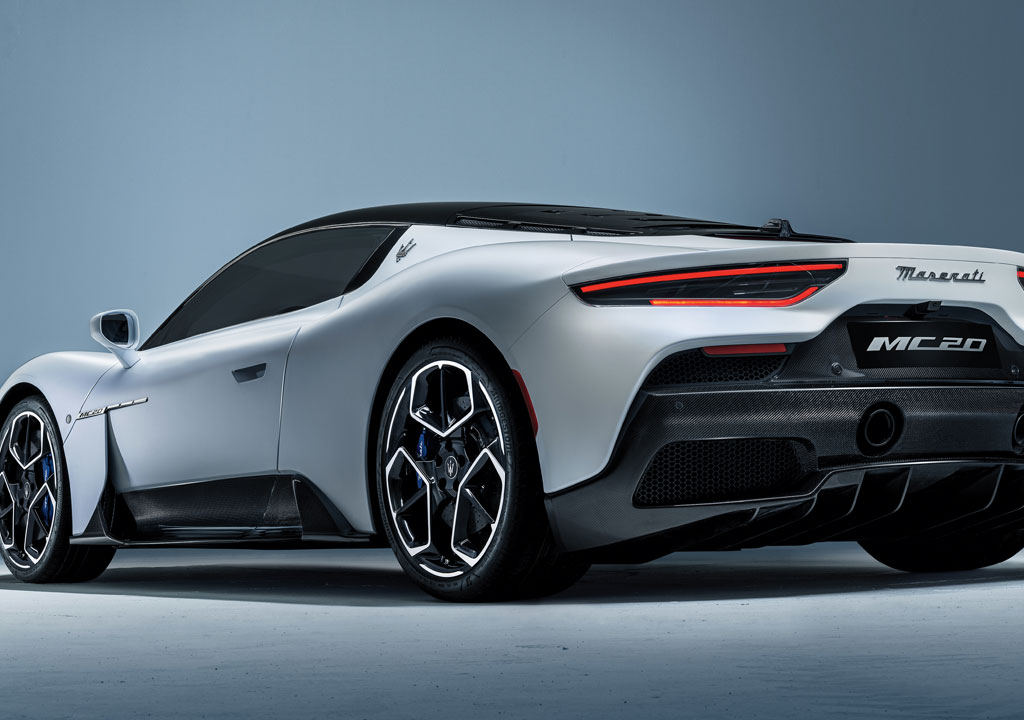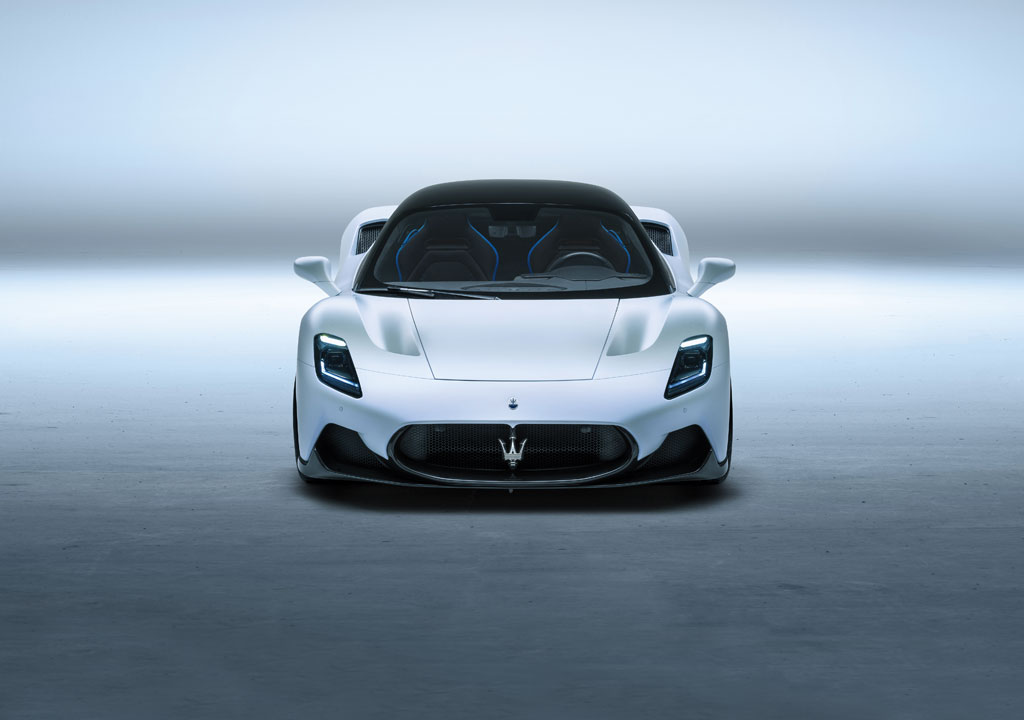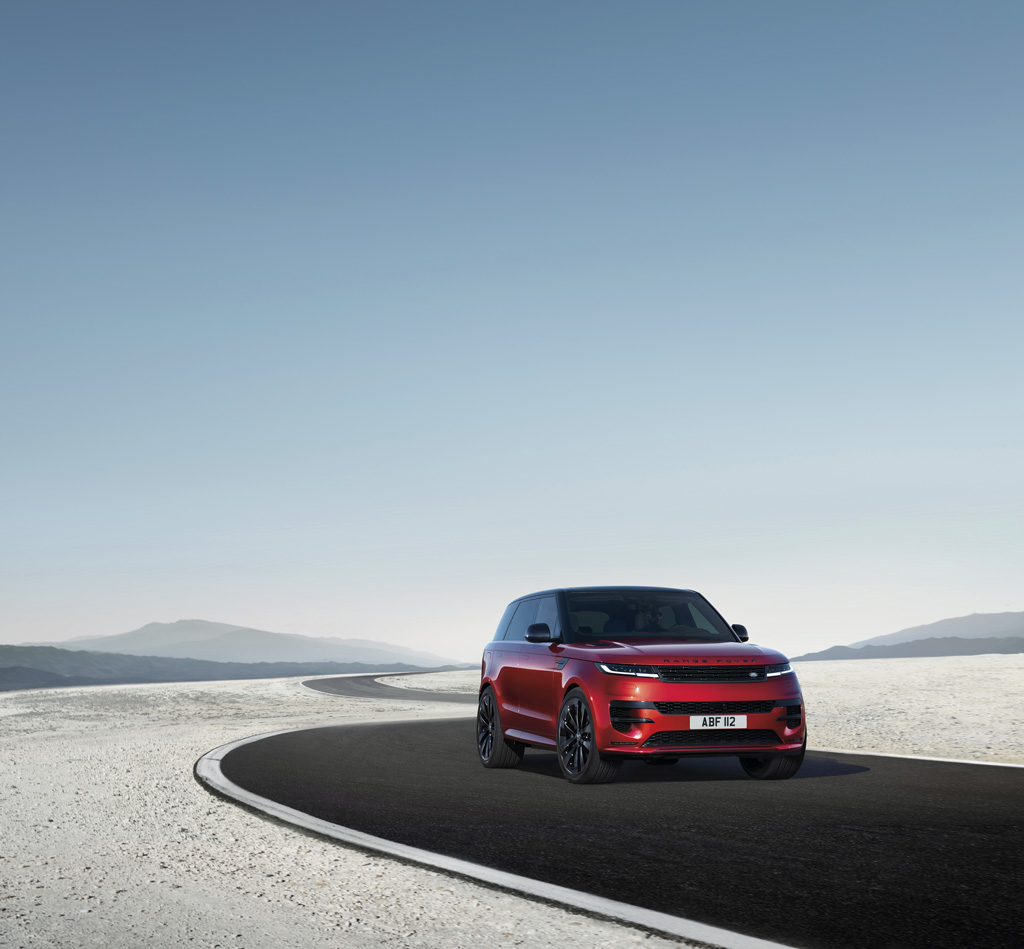At first glance, Maserati’s new MC20 super sports car might seem a radical departure from the Modenese marque’s marginally less exclusive Ghibli and Quattroporte sedans and Levante SUV. But to students of Maserati’s history, the 202 mph, mid-engine two-seater is something more subtle and complex, representing both the revival of an illustrious motorsports tradition and a reimagination of the brand for a new era.
Head-on, the MC20 — short for Maserati Corse (“Racing”) 2020 — is pure Maserati, its predatory grille sporting the unmistakable Trident that graced the original of the species, the 1926 Tipo 26, which in its debut, scored a category win and an eighth overall finish in the grueling Targa Florio. In the MC20’s dramatic, vertical headlights, a first for a Maserati supercar, one senses an allusion to the distinctive upright fenders of the brand’s inimitable 1953 A6GCS Berlinetta Pinin Farina, or perhaps those of the Tipo 61, which stormed to victory at the Nürburgring 1000 km in 1960 and 1961.
Pivoting upward, the MC20’s butterfly doors reveal a driver-focused interior clad in Alcantara, laser-engraved for a unique sculptural effect. Essential controls are situated in a discreet carbon-fiber console and in a steering wheel flanked by carbon-fiber paddle shifters. Bespoke, composite seats, made by the Piedmontese firm Sabelt, ensure exquisite control during high-speed maneuvers and superb comfort on long-distance tours. By way of cross-pollination, a similar interior aesthetic can already be found in Maserati’s new Grecale SUV.
In profile, the MC20’s upper body is graceful, hand-sculpted, coolly minimalistic; the lower section starkly functional, computer-designed, engineering-driven. Whether one finds the duality jarring or scintillating is a matter of taste, but for the past near-century, the pleasure and thrill of driving a Maserati have always derived precisely from this inimitable blend of art, artisanship and technical sophistication.
Consider the breathtakingly beautiful Tipo 61, nicknamed “Birdcage” for its incredibly light tubular steel chassis, which, mated to an extraordinarily potent 3-liter, inline four-cylinder engine, yielded an unheard-of weight/power ratio of 5.29 pounds per horsepower. And then the MC20, whose flawless skin surrounds a featherweight, Formula 1–derived carbon-fiber tub and a revolutionary 3-liter 6-cylinder Nettuno engine, and whose virtually identical weight/power ratio is surely not coincidental.
Could the MC20 have been more overt about its racing ambition, like the ferocious MC12 of 2004, with its sharply truncated rear end and 2-meter-wide spoiler? Perhaps. But unlike the MC20, which will eventually evolve from street form into a pure racing machine, the MC12 began life as a race car before being ever so slightly detuned for homologation purposes.
In a critique on his consistently fascinating YouTube channel, the MC12’s designer, Frank Stephenson, found the MC20 lacking in the essence of Italianness known as italianità. The same could be said for some of the contemporary menswear in Ermenegildo Zegna’s current collection, the techily aloof High Performance Packaway Wool and Cotton Jersey Hoodie, for instance. The point, however, is that italianità and Italian design are different things, and the latter is neither immune to trends nor to outside influence, as evidenced by the fact that the sculptor Giambologna — from whose statue of Neptune Mario Maserati cadged the atelier’s three-pronged logo — was a Flemish expatriate.
Ultimately, the true test of design is time, and until time issues its judgment of the MC20, one must simply follow the command of a butterfly door as it sweeps silently upward and whispers, “Drive.”











